 1 / 14
1 / 14

 1 / 14
1 / 14

Rezan Has Museum is the institutionalized version of passion and its founder, Ahu Has, is a name identified with the museum. An individual with a collector’s experience in a professional sense, ranging from archaeological objects to Modern and Contemporary works. We had a chance to talk to Ahu Has about her long story in collecting.
How did you start collecting?
I’ve always been interested in art. I studied English Language and Literature at Bilkent University; at that time I took Art History classes outside of my department and in early 2000s I began to collect archaeological objects. I registered with the Museum of Hagia Sophia.
I personally liked archaeological objects made of terracotta and glass a lot and I started building my collection accordingly. Later as I found the opportunity to build a museum I froze my collection and began to collect for the Rezan Has Museum.
Rezan Has Museum was founded in 2007. Next year it will be our 10th anniversary; I can say that we built an important collection throughout this decade. As my personal area of interest, archaeology was a great fit for Kadir Has University and Rezan Has Museum.
Can you inform us about the “Ahu & Can Has Collection”? What kind of works, periods and artists are you interested in?
It is a Turkish painting collection. In 2009 we exhibited it at Rezan Has Museum as “The Centennial Tale of Turkish Painting II” and also made a book for it. It was an amazing experience… I think that painting is still the locomotive for all the other art forms.
I love old Turkish painters. İzzet Ziya, İbrahim Çallı, Halil Paşa, Nazmi Ziya are among those I am most passionate about. Fahrennisa Zeid's portraits, on the other hand, have a very special place for me.
I’m still trying to understand the contemporary, I try to travel and see and read as much as I can. Lately we began to collect modern artworks from international art festivals and galleries.
Photography is another medium I’m deeply interested in.
I think the wisest and most pleasant ways of spending money once the basic needs are met and our circles are supported are: number one, travelling; number two, collecting art. How you spend your money is as important as how you earn it. We see it that way and probably invest most of it in art.
Does your collection have a defined identity? Is it deliberately built?
Of course! Sure, Can is particularly good at this and after twenty years of experience I am not bad either. We travel a lot and read a lot. We have books on every artist and we also follow certain publications. As a result, something called the educated eye emerges naturally; first precondition is to love the work, the second one is that it should tell something to us. For instance we don’t buy a Nazmi Ziya because we want one, we look for the one we can find. Although this notion of beauty is subjective, Can and I have a common understanding of “beauty” in this realm that evolved as time passed. We seldomly disagree and respond to similar things.
What does collectorship mean to you?
In addition to collecting what you love, sharing them with others is another important aspect. We learnt this a bit later with the help of the museum. It is a very special kind of pleasure to own an artwork I love and to be able to see it whenever I want to.I think the wisest and most pleasant ways of spending money once the basic needs are met are:travelling and collecting art. How you spend your money is as important as how you earn it. We see it that way and probably invest most of it in art. In the last few years I started collecting bowls by Alev Ebuzziya. I intend to continue and turn it into a collection as well. Can loves them too. It was my birthday and as we were wondering what to do, I said “let us have an Ebuzziya”. I have waited for a piece I particularly liked for an entire year and then I was lucky enough to find it. I mean starting a new collection is very exciting. In another instance, we found one of Zeid’s works in U.S.A. Such discoveries, searches, pursuits… These are definitely exciting and pleasant.Living side by side with art is also pleasant and educational for my children. We have three children and it is a great opportunity for them to grow up in such an environment, seeing, learning, and trying to understand. As they got used to visiting museums and galleries with us since they were little, this has become the activities they themselves demand and enjoy.
What is your collector’s vision? How do passion and knowledge combine?
Of course you don’t buy an artwork only because of an important signature or the mere beauty of it.
Let me share an anecdote that you might have already heard – “Sara” by Mahmut Cüda is one of my favorite pieces in our collection. During our collection exhibition at the museum we met some of the artist’s relatives. They shared great stories with us. They said the first version of “Sara” was nude and then one night at a ball organized by the Faculty of Fine Arts the artist met his wife-to-be, who was wearing an orange-red dress, the one we now see on Sara in the painting. Mahmut Cüda made Sara wear the exact copy of that dress. Hearing the story of a painting you love, especially from the artist’s family, strengthens the bond between you and the work. Works that are not only objects on the walls but objects with a life, a story, acquiring value with memories.
How do you proceed regarding acquisitions, conservation, exhibition, and the discovery of individual and/or social contexts? What are your criterias?
We already acquire our paintings from certain sources. There are very few of them in Turkey and they already conduct research in advance. So we are usually comfortable about it.
But exceptions do exist, of course. Once we liked an Ayvazovski and they couldn’t establish its authenticity here. So we decided to contact specialists from abroad and proceed accordingly. They eventually ruled it was not an original piece and thus we decided not to acquire it for our collection.
Conservation, on the other hand, depends on the artwork’s content. As a master’s graduate in cultural heritage management and conservation, and as an art enthusiast and collector, being a museum professional compels me to look at the process with a very meticulous eye.
Exhibitions are surely the most highlighted activities of a museum. Rezan Has Museum’s meticulously prepared publications are also very popular. They survive and are always at hand once the temporary exhibitions are over.
We prepared an equally meticulous book for our collection exhibition. Turkey’s prominent experts and collectors contributed to it with their texts, making it rich in content.
Can you share some tips with us on managing a large-scale collection?
First of all it is crucial to have a good archive. We worked extremely professionally on the exhibition catalog. Measurements were taken, artworks’ conditions were analyzed and the necessary conservation work was conducted; then they were photographed, all information was gathered and articles were written on every painting with the meticulous work of prominent experts. I was extremely sensitive also due to my identity as a museum professional and I worked with great names in the field.
Since the day it opened our museum hosted several private collection exhibitions; each collection that was taken behind closed doors and introduced to our public, served the mission to achieve permanence, and to make the values of the past join those of the future.
Then there is the Rezan Has Museum whose identity has become one with Istanbul. We are talking about a big, institutional structure composed of the museum and Kadir Has University which first began as a family collection. Were you involved in the institutionalization process?
Of course, how can I not be? We built this dream with the deceased, Mr Kadir Has. I was involved in every step and aspect of the foundation process, and Kadir Bey was one of the most special people I have ever known. An outstanding entrepreneur with an amazing vision, a true leader.
During the restoration of the university’s Faculty of Architecture and Design building, we discovered the remains of a structure at the basement level dating back to the 17th century, which we initially thought was a Turkish bath. That part was recently defined as the building’s basis according to the restoration master plan. We also have a Byzantine cistern dating back to the 11th century.
One day as we were visiting this empty hall with Mr. Kadir we were thinking about what to do with it and the idea of making it a museum was born then. The historic Cibali Tobacco and Sigarette Factory where the university was already based was awarded by the EU in 2005 as the best building restoration. It was a very successful work by Mr Mehmet Alper who also leads the university’s Master’s Program in Cultural Heritage Conservation and Restoration. We worked one on one with him here. The space almost talked to me and Mr. Kadir, and said “make me a museum”. We had already promised to him; but unfortunately he could not see it happen.
Then we started thinking about the kind of collection we were supposed to build.
Within this context, we decided to build our collection on archaeological objects. The fact that we are a university museum and our awareness of the responsibility we have for carrying our cultural values to the future generations was also a defining factor here.
What does the museum collection feature?
We built an outstanding collection in the last decade; we have a truly dynamic structure. Promoting and explaining the Anatolian culture has always been our intention. As we began, we wanted to specialize on one subject. We started to work on the Urartian civilization and in 2014 we presented our “Urartian Jewelry Collection” exhibition to our audience. Still ongoing, the exhibition can be seen until December 31, 2016.
Our collection of over 1000 items, and of 74 belts you can only see here under one roof, was studied by our museum specialists; the restoration and conservation procedures took place in the labs we founded here. In 2012, our Urartian Jewelry Collection was taken under protection within the framework of the Art Conservation Project with the contributions of the Bank of America (BOA) and Merrill Lynch. The bank authorities who met several museums in Turkey honored us by nominating us as the project partner after a long evaluation process. Now our negotiations continue for presenting the collection to the American art enthusiasts, in collaboration with BOA.
In addition to Urartian objects we also have items ranging from the Neolithic to the Seljuk period. We also acquired documents, objects and machinery belonging to the Cibali Tobacco Factory, enriching our inventory.
How does Rezan Has Museum approach museology?
As a rsult of the awareness of being a “Museum” and its organic link to Kadir Has University, it is important to be a university museum fostering academic work. Since 2007 we have been organizing authentic exhibitions and cultural events as part of our active museum mission. Our distinguishing trait is probably the latter. Instead of pre-packaged exhibitions (although I can’t deny they are also very useful), we try to generate original projects every step of which is planned by us.
At this point of the museum what I am mostly proud of is that it represents the history of our land. It is crucial to embrace our cultural heritage in all its colors and to raise awareness.
Another must-have: our publications are as important to us as our exhibitions. We believe in the power of the right publication prepared by the right group of people. A consulting committee of leading experts from Turkey and abroad works on each exhibition and publication, from the author to the editor. Exhibitions end but the publications remain forever. It is very important to us that our students and young people are educated with a scientifically oriented viewpoint.
Can you inform us about the museum’s highlighted activities that took place since its foundation? What’s next?
Old Istanbul and the Golden Horn with its unbelievable cultural richness are particularly interesting for us, also due to our subject matter. In 2008, to remind of the region’s long forgotten values and to strengthen our bonds with and embrace the Golden Horn, we organized an exhibition bringing together immortal masterpieces by Turkish Masters in Painting depicting the Golden Horn in their own style. We asked contemporary masters to interpret the Golden Horn. Leading artists like Adnan Çoker, Ergin İnan, Devrim Erbil, Bedri Baykam and Ömer Uluç didn’t leave us alone. Another exhibition based on the Golden Horn was “Haliç’e On Beş Kapı” (Fifteen Gates to the Golden Horn). Here we told the story of the Golden Horn as a subject for the works of several travelers, painters and writers as well as what remains of the city wall structures.
In 2011 we organized an important exhibition entitled “Like Moths to the Flame: The Ottoman Fire Brigades”, in collaboration with various institutions and with the works features in our factory collection. It was truly breathtaking! It was a tribute to the heroes of Istanbul, a city that somehow managed to be reborn out of its ashes after each fire.
Since the beginning we always gave a special importance to photography exhibitions. Photography not only reads a history but it also turns documentation into an artistic spectacle. We did shows like “Derme-Çatma Haliç” (The Patchy goldern Horn), “Işıyan Sabahlara Doğru Afganistan” (Afghanistan: towards Glittery Mornings), “Hasankeyf’i Bilir misin?” (Do You Know Hasankeyf), and “Sualtına Işık Tutanlar 1952-2012” (Underwater Illuminators 1952-2012). Finally we presented “Küstüm Oynamıyorum: Tarlabaşı Son Demler” (I’m Upset and Not Playing: Tarlabaşı Final Curtain) with Naz Köktentürk.
Another very original and impressive event we did in 2010 was “Kayıp Dillerin Fısıldadıkları” (What the Lost Languages Whisper), opening a door to the world of those languages no longer used. As it was very well received, we did a more comprehensive volume two in 2014. It illustrated the story of writing from early depictions to the present, and how it affected societies alongside language.
In addition to these local projects we also collaborated with international artists. The first that comes to my mind is the exhibition “Confrontations: Individual and Life” by Richard Smeets, four works by whom are still hanging at my office. He is a Dutch, multidisciplinary artist involved in painting and sculpture. We became great friends.
Next year will be the 10th anniversary of the museum’s foundation. With its name, attitude, detail-oriented character and small but powerful steps it feels like a “female” museum. I probably have a role in this too. Consequently, in our 10th year we will focus on the theme of “women”. We have intense preparations for a show on “Idols and Figurines” in our collection. We will also organize the third of the Turkish Painting exhibitions, this time focusing on female painters, the turning points for the Contemporary Turkish woman and painting. A very colorful and intense year is awaiting us with panels and seminars on “Pioneer Women”.
How do you proceed with the museum acquisitions?
When historical objects are concerned the procedure is different from acquiring a contemporary artwork. Before acquiring an archeological object our experts examine it, study it and then we decide. We have great relationships with archaeological museums. Once the Istanbul Archaeology Museums, our inspector-museum approves our acquisition, we immediately register the object. It can only be exhibited once this procedure is over.
Of course we also have a collectorship license independent of the museum. Some objects can sometimes come from those collectors who give up on collecting and want to sell their inventory. Donors exist too. But we have never acquired works from auctions.
Considering the collecton-to-museum history, What are your future plans for Ahu & Can Has Collection?
For the moment we occasionally lend our works to exhibitions taking place in Turkey if there is demand. We also have works in Turkish Contemporary Painting registered to our museum. Our President Mustafa Aydın is an enthusiast, and Hasan Bülent Kahraman offers us great support.
What would you recommend to a new collector?
It is a long-term and very pleasant activity.
It is a passion that takes a long time to be realized, whatever your budget is.
Things are being collected, but as time passes you become more selective and you examine everything in more detail.
Of course love is compulsory, you cannot start without it but the first condition is patience!
Your final remarks?
Archaeological object is another field. We did all this in 10 years. Scholars, scientists, artists come here and express excitement. We even have people asking if they can touch the object. What I understand from this: we build a great adventure, a synergy. We are still in the beginning of this road. We must work a lot more to make sure that art, artists, science and our cultural heritage is properly understood and appreciated, conserved and kept alive. We will continue doing our best in the light of our mission in this realm.
This interview is conducted by Ali Gazi on behalf of Art50.net for TEB Private.



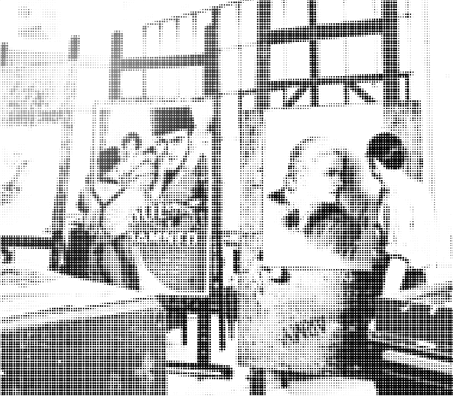



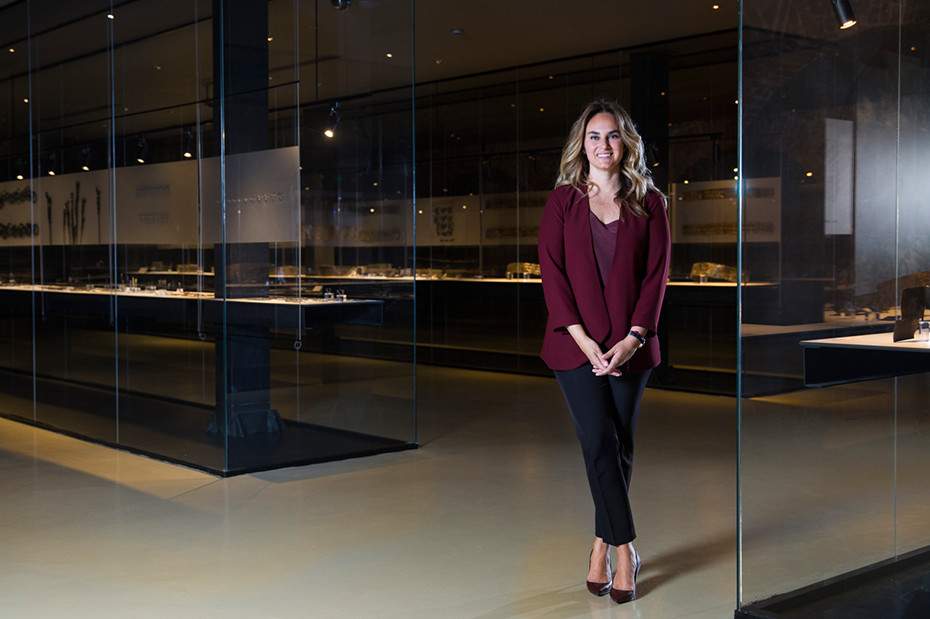
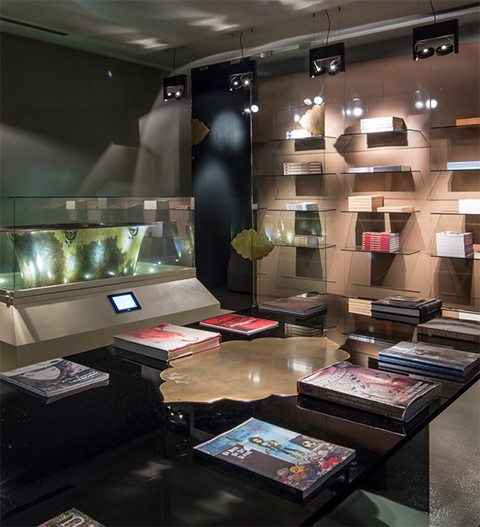
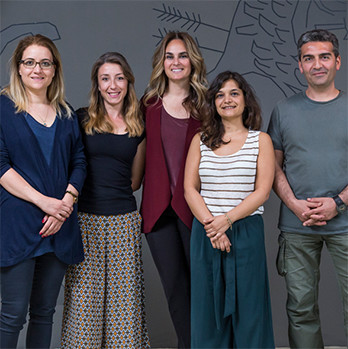

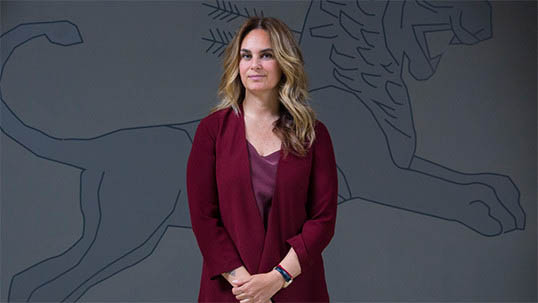
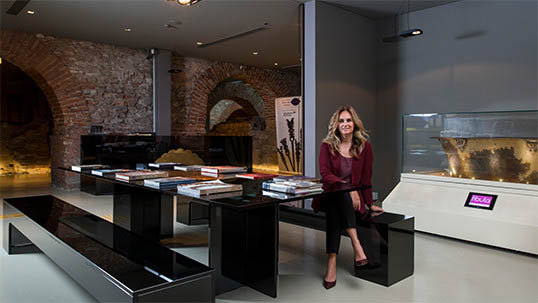
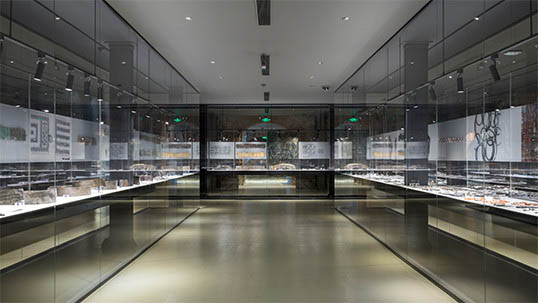
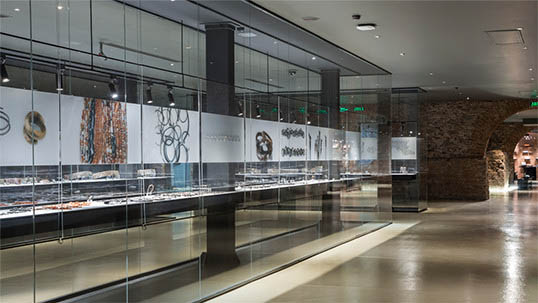
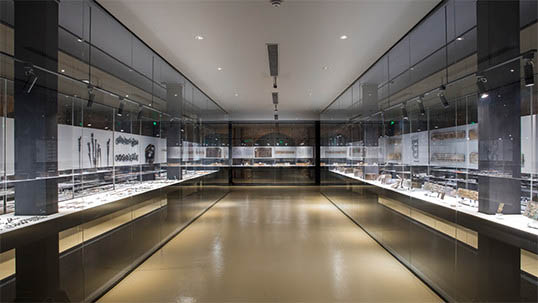
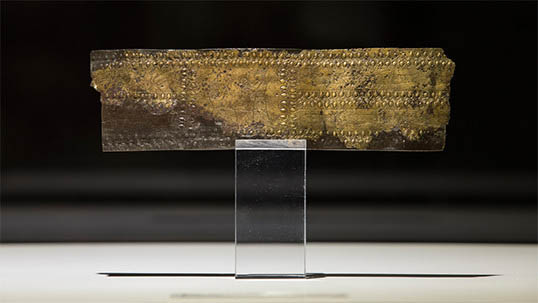
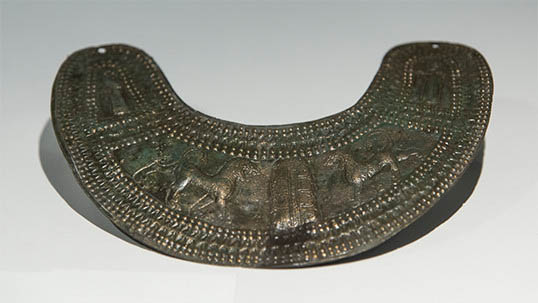
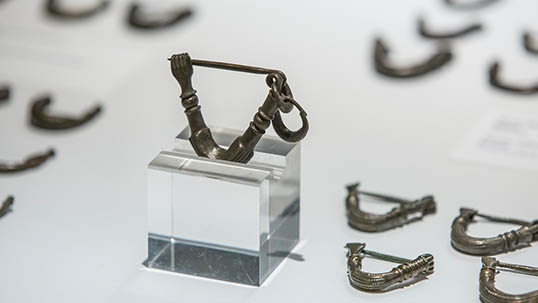
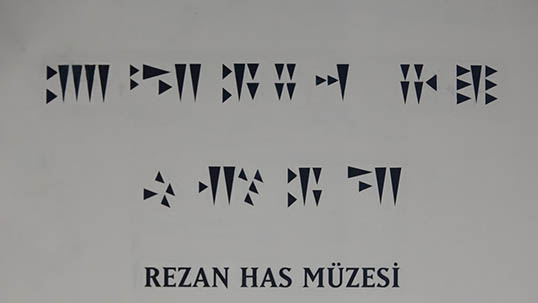
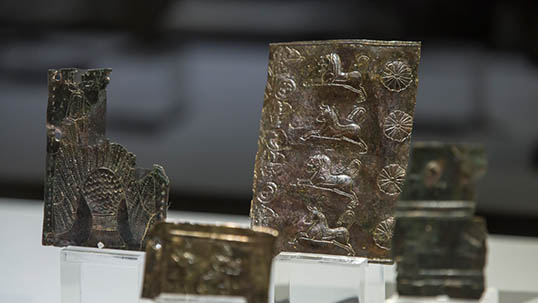
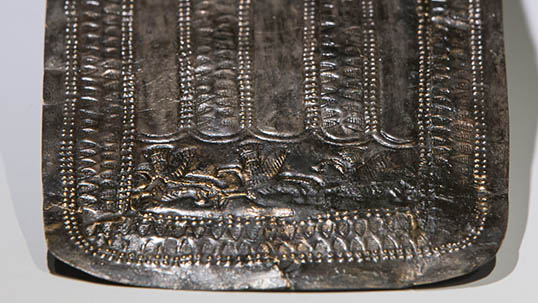
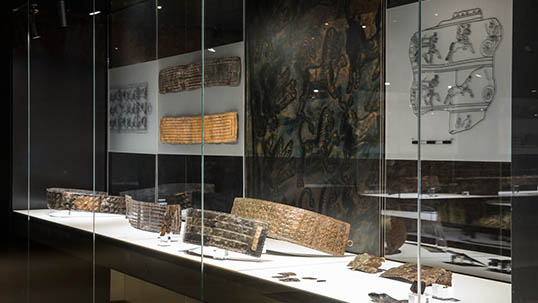
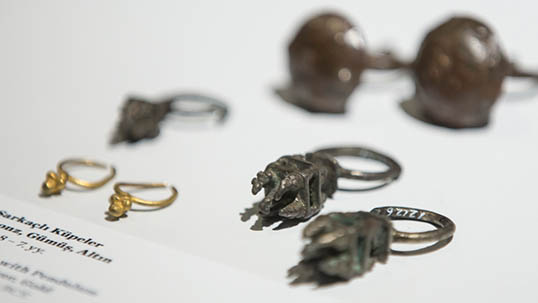
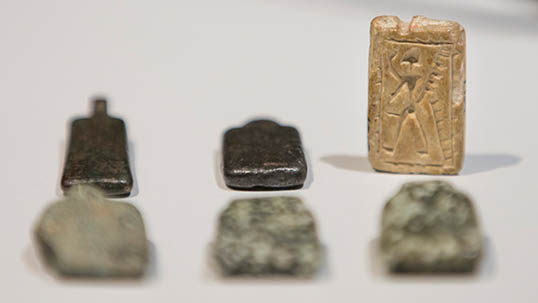



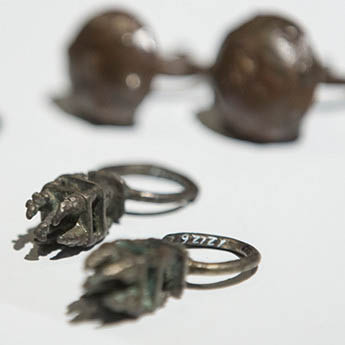

 UP
UP


